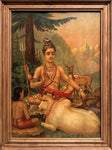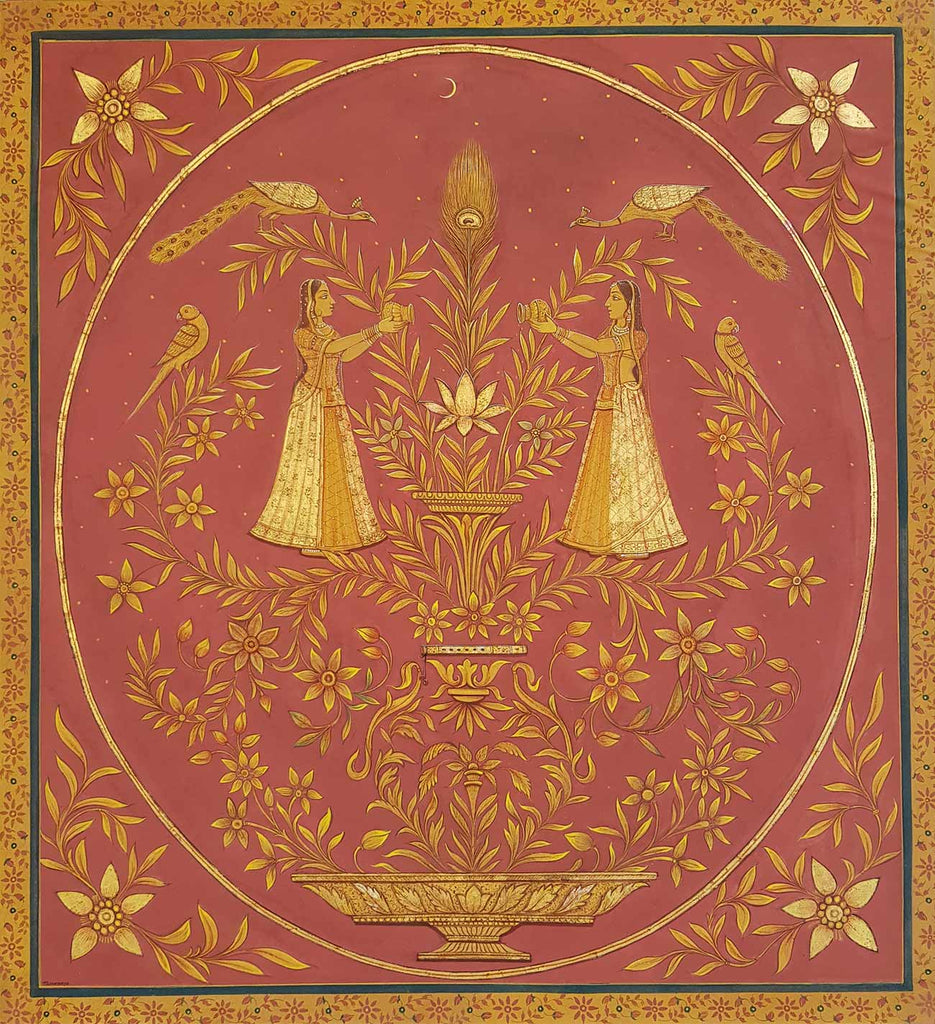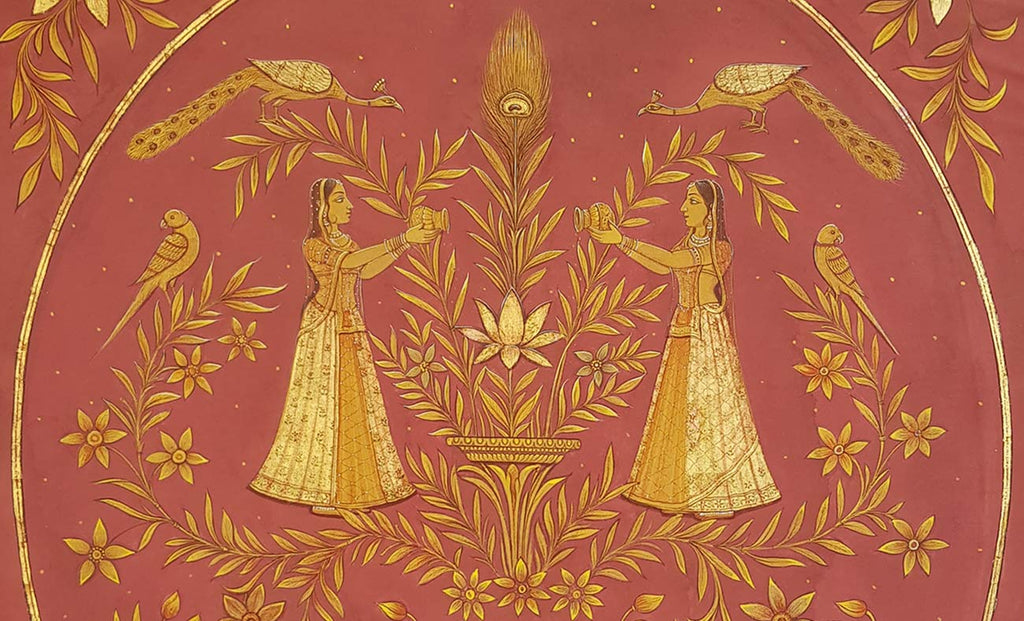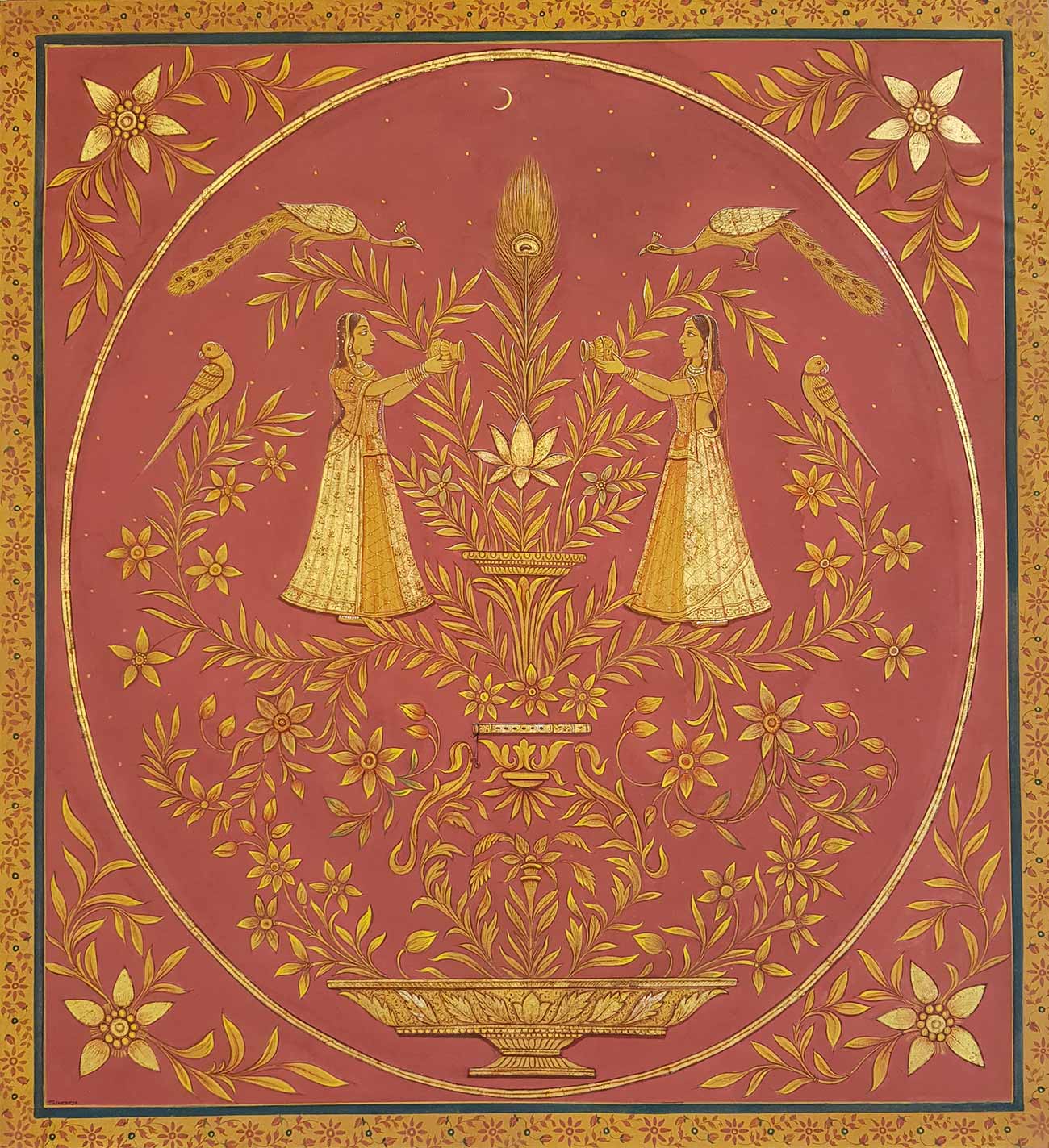- Home
- Gopis - 05
Loading...
Gopis - 05
by Pushkar LoharAll orders are insured for transit.
We ship worldwide.
All orders are insured for transit.
We ship worldwide.
Details
| Artist: | Pushkar Lohar |
| Size: | 36 x 33 inches |
| Medium: | Painted on Cloth |
Description
In this artwork, Lord Krishna is represented by the plant in the centre of the painting. While an uncommon depiction, the peacock feathers and lotuses seamlessly blending into the plant, indicate the connection with Krishna.
Usually, Pichwais don’t carry an artist’s signature because each artwork is created by a group of artists. However, when a Pichwai is created by an acclaimed or senior master artist, he may add his signature on to it. This artwork carries the signature of renowned Pichwai artist Pushkar Lohar, hence increasing its value.
Note: Actual colour of the artwork may vary slightly from the photograph.
-
Description
Read MoreIn this artwork, Lord Krishna is represented by the plant in the centre of the painting. While an uncommon depiction, the peacock feathers and lotuses seamlessly blending into the plant, indicate the connection with Krishna.
Usually, Pichwais don’t carry an artist’s signature because each artwork is created by a group of artists. However, when a Pichwai is created by an acclaimed or senior master artist, he may add his signature on to it. This artwork carries the signature of renowned Pichwai artist Pushkar Lohar, hence increasing its value.
Note: Actual colour of the artwork may vary slightly from the photograph.
-
Details
Artist: Pushkar Lohar Size: 36 x 33 inches Medium: Painted on Cloth AUTHENTICITY
This artwork is accompanied by an Authenticity Certificate.
-
Returns
We accept returns within 7 days of delivery if the item reaches you in damaged condition.CARE INSTRUCTIONS
Pichwais are best framed with regular or non-reflective glass. Artworks should be displayed away from direct sunlight and breeze. To clean any accumulated dust, use a soft, dry brush or cloth very lightly on the glass surface or the frame. Make sure there is no moisture on the brush or cloth before cleaning the surface. Once a year, remove the artwork from the wall for a couple of days to let the wall breathe and avoid moisture accumulation. Minor discolouration over the years is normal and to be expected. -
Shipping
Shipping costs included for destinations in India.All orders are insured for transit.
We ship worldwide.
CARE INSTRUCTIONS
Read MorePichwais are best framed with regular or non-reflective glass. Artworks should be displayed away from direct sunlight and breeze. To clean any accumulated dust, use a soft, dry brush or cloth very lightly on the glass surface or the frame. Make sure there is no moisture on the brush or cloth before cleaning the surface. Once a year, remove the artwork from the wall for a couple of days to let the wall breathe and avoid moisture accumulation. Minor discolouration over the years is normal and to be expected.
This item has been added to your shopping cart.
You can continue browsing
or proceed to checkout and pay for your purchase.
This item has been added to your
shopping cart.
You can continue browsing
or proceed to checkout and pay for
your purchase.
This item has been added to your wish list.
You can continue browsing or visit your Wish List page.
Are you sure you want to delete this item from your Wish List?
Are you sure you want to delete this
item from your Wish List?



















































































 View Full Screen
View Full Screen



